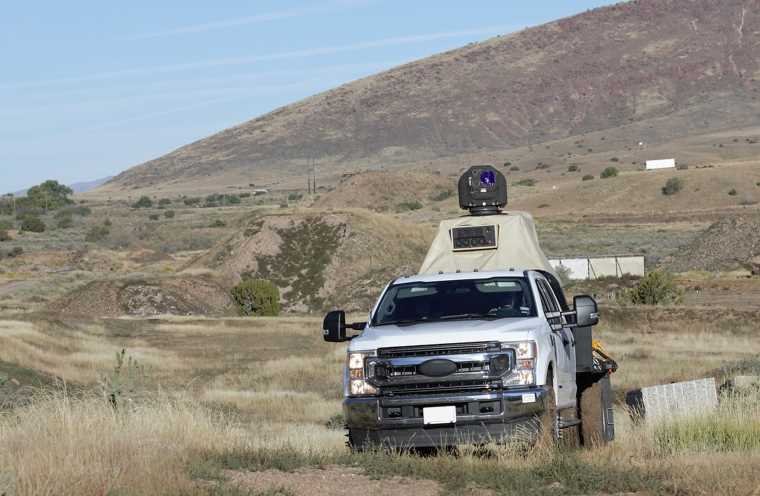Raytheon UK, a division of defense contractor Raytheon and its parent company RTX, have announced they are bringing their combat laser weapons technology to the UK, with hopes of beginning the integration of the systems in October.
Part of the Ministry of Defence’s Land Demonstrator program, the lasers will be versatile enough to mount to the Wolfhound land attack vehicle, opening up a wide variety of mission profiles and environments to the benefits of directed energy weapons.
Combat Laser Weapons Aren’t Coming; They’re Already Here
While using laser beams for combat has been a staple of science fiction for decades, the world’s defense contractors have only recently begun to build practical combat laser weapons. Raytheon delivered just such a weapon to the United States Air Force earlier this year, and in June, The Debrief reported that defense contractor Lockheed Martin is making the world’s most powerful combat laser even more powerful.
Still, many of the best combat laser systems being tested or even already deployed are large and immobile, limiting their uses. Now, Raytheon UK says that the weapons they will receive from their parent company are light, mobile, and plenty powerful, making them more versatile and practical than the more powerful directed energy weapons.
Wolfhound Mounted Laser is Versatile and Mobile
In a press release announcing the anticipated receipt and planned integration of the new portable combat laser weapons, the company notes that this particular model offers 15 kW of stopping power. For comparison, the model their parent company recently delivered to the US Air Force is rated at 10 kW. The most powerful systems in development range from Israel’s 100 kW “Iron Beam” border defense combat laser weapon to as much as 500 kW for the system being developed by Lockheed.
“The arrival of this transformative technology is an important milestone in our collaboration with the MoD on using directed energy to address a variety of threats, from drones and UAVs to more complex missile systems,” said Julie Finlayson-Odell, managing director of weapons and sensors at Raytheon UK.
As noted, the more powerful combat laser weapons are designed to take down drones, mortars, and even cruise missiles, whereas more portable models like this one are mainly tasked with combatting the ever-increasing threat of low-cost UAVs that can attack in swarms.
To meet that challenge, the company explains that this particular laser system “is compact, portable, can be installed on a variety of platforms,” and can be easily integrated with conventional air defense systems. This includes the robust Wolfhound combat vehicle already in use in the UK, the company explains, while also pointing out that their laser system has a number of additional benefits over larger systems.
“With deep, rechargeable magazine and minimal logistics, this laser weapon is an affordable and viable option to protect military and critical infrastructure and rapidly defeat threats,” the press release explains.
The main benefit of lasers over conventional munitions is the relative cost per shot. That’s because shooting down a $500 UAV with a $50k missile isn’t sustainable, especially if the UAVs attack in swarms. In contrast, the only ammunition cost for a laser weapon is the few dollars of electricity needed to power each shot.
Successful Field Tests Mean Integration is Ready for October
When announcing the anticipated receipt and integration of these new laser weapons, the company highlighted the fact that this particular combat laser weapons system has performed well in numerous field tests. This included operating in all types of weather conditions, ranging from extreme heat, cold, and rain to sleet and snow.
In a recent set of live fire exercises, they say the system “successfully acquired, tracked, targeted and destroyed dozens of drone targets in short-range attack, swarm attack and long-range threat scenarios.” Passing this last set of readiness checks means that they are ready to begin integrating this weapon into actual operational environments in just a few weeks.
“This system is a culmination of decades of investment, research, and innovation, and its arrival reflects our continued commitment to help fulfill a key strategic objective of the UK’s Integrated Review, which is to understand how directed energy weapons can safely and effectively operate alongside other elements of the UK’s armed forces,” said Finlayson-Odell.
Christopher Plain is a Science Fiction and Fantasy novelist and Head Science Writer at The Debrief. Follow and connect with him on X, learn about his books at plainfiction.com, or email him directly at christopher@thedebrief.org.

